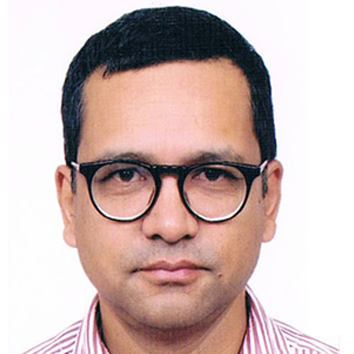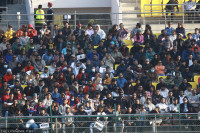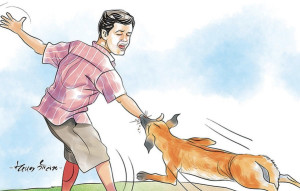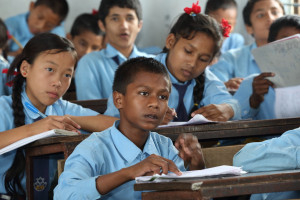Columns
Dynamics of educational migration
The large number of Nepali educational migrants in recent times is not due to our societal failure.
Pratyoush Onta
In early April 1984, a letter arrived in my name via the regular postal service in our then home in Thamel, Kathmandu. This letter was much anticipated since it was the season for receiving responses from American colleges. I had applied to several in late 1983.
After I opened it, it became clear that there was good news for me. Brandeis University, located in Waltham (11 miles west of Boston), had admitted me to its undergraduate degree programme and offered a Wien International Scholarship to cover the costs of tuition, room, board and health insurance. The Wien Scholarship, as I would come to know later, was established in 1958 by Lawrence and Mae Wien to help bring undergraduate students from all over the world to Brandeis for a mutually beneficial education.
My parents had gone to college in Nepal, but my maternal grandfather had trained as an Ayurvedic physician in India. Several of the first cousins of my parents had gone to India, Pakistan and the former Soviet Union to train as engineers and medical doctors. In the mid-1970s, a second cousin of mine had gone to the US to do a PhD in physics. So I was following in their footsteps. In fact, all of my senior relatives and I were following in the footsteps of many generations of Nepalis who had previously gone out of Nepal—to India before 1951 and increasingly other countries to get an education.
The destinations have become more varied, and the number of Nepali educational migrants, from almost all strata of our society, has gone up by many folds in the past 40 years. However, the fact remains that educational migration is an old phenomenon for Nepalis. This is the first point to recognise in our public discourses about educational migration in contemporary Nepal. This phenomenon will continue no matter how many good universities we create in our country. And it cannot be the case that educational migration was all good when children of Nepal’s elites were the student-travellers, and suddenly it has turned out to be a crisis when our country’s non-elites also start sending their children abroad.
More resources available
Although Brandeis was very generous in covering all my expenses once I arrived at the college, its offer did not include the ticket needed to convey me from Nepal to the US.
The one-way ticket from Kathmandu to Boston then cost about $700. In July 1984, the exchange rate was about Rs16.80 per dollar. Hence, the ticket cost just under Rs12,000. However, my family did not have the cash to buy it. There were no family savings. Among the non-royals, only those who had liquidated old wealth in the form of land and other properties and some businessmen had lots of cash then.
Desperate, my father turned to several American friends for help. One of them, who had worked in Nepal with my father in the early 1970s, generously agreed to buy my ticket.
More than 40 years later, many thousands of Nepali students are going to various colleges and universities in South Asia, East Asia, Australia, Europe and North America. Some of them (there is no publicly available data on this) are receiving full financial aid from the institutions concerned or from scholarship-providing national governments/non-governmental entities. Many others are paying large amounts from their family savings, even though they have received some scholarships. Yet many others are paying full education costs by utilising family savings or, more often than not, taking huge loans from relatives and friends.
Student migrants in the latter two categories run into tens of thousands each year. This suggests that in the past four decades, the number of Nepali families that can afford to send their daughters or sons to universities outside of Nepal by covering substantial or full costs has substantially increased. These costs are not nominal. Many families I know are paying anywhere from $10,000 to $40,000 per year to educate their child in the US. The costs for higher education institutions in the UK, Japan and Australia are comparable. Compared to 1984, a good number of Nepali families now have either savings or the means to access cash through formal or informal loans to pay for their children’s education abroad.
The families doing so are not only the hunekhane ones. I know a single mother who raised her two daughters while working as a wage labourer in Kathmandu. Her older daughter left for Australia in 2019 and trained to become a nurse. The younger daughter followed soon and has completed her BA. In each case, their mother took out huge loans from her well-wishers. Most of the loans have already been paid back.
In other words, thousands of students are now choosing to be educational migrants because their families can afford to cover partial or full costs of their education abroad. Hence, the significant number of Nepali educational migrants in recent times is not a result of our societal failure. Instead, it is the result of the kinds of financial resources now accessible to even working-class members of our society that was unimaginable to my Kathmandu-based middle-class family in 1984. This is the second point to recognise in our public discourses about educational migration.
Good schools have increased
In 1984, the handful of Nepalis who went to US colleges as freshmen were graduates of a few good schools in Kathmandu, such as St Xavier’s and St. Mary’s. They had done well not only in their schools but they also had good TOEFL and SAT scores to boost. For most of the graduates from other schools in the country then, participating in the application process was difficult because the needed information was not available easily and their English was not up to mark.
What the huge number of students going to various English-speaking countries today suggests is that the ability to produce such graduates has now spread to hundreds of schools all over the country. And because of the internet, many of these students are well versed in the needs of the application process by the time they are in high school. This large increase in the number of schools producing graduates with good English ability is the third point to recognise in our public discourses about educational migration.
I’m not suggesting that educational migration is without flaws. Inequalities of access persist. There is exploitation in the student recruitment infrastructure now overwhelmed with various levels of brokers. However, such migration is not a tale of complete doom and gloom as it is often made out to be in our public discourses.




 10.12°C Kathmandu
10.12°C Kathmandu













%20(1).jpg&w=300&height=200)

